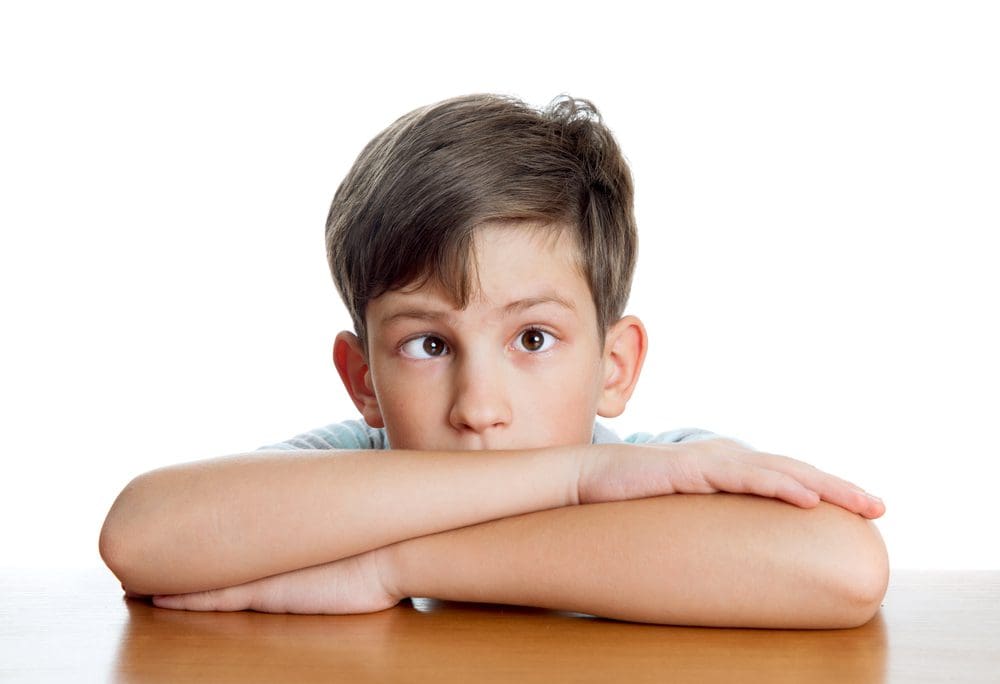Children’s Eye Health Guide: Exams, Glasses, & More
Home /
Last Updated:
Just like adults, children have specific needs when it comes to their vision. It is important for parents to understand when to take them to the doctor, eye issues they can experience, corrective lenses for children, and other topics that can aid them in ensuring their child has the best visual health possible.
Table of Contents
It is important to take kids to the eye doctor regularly. Children should have their first eye exam between 6 and 12 months old, and they should have regular eye exams throughout their lives.
There are certain eye problems that can develop in childhood. It’s important to have these assessed and diagnosed to avoid worse problems later on.
There are different treatment options for childhood eye issues, ranging from corrective lenses to surgery. Eyeglasses are often the first-line treatment to make their vision clearer, so they do not have trouble seeing in class and during other activities.
Parents should also be aware of how a child’s vision changes as they get older. This may make it easier to identify any issues that are affecting their child’s vision throughout life.

How Often Should Children Visit the Eye Doctor?
It is important to have a child’s vision and eye health assessed regularly, so any issues can be caught as early as possible. Children should have their first eye examination between 6 and 12 months old.
Children can start to experience vision issues early in life that an eye examination can catch. It is estimated that when it comes to preschoolers in the U.S., approximately 35 percent have farsightedness, astigmatism, or nearsightedness.
You deserve clear vision. We can help.
With 135+ locations and over 2.5 million procedures performed, our board-certified eye surgeons deliver results you can trust.
Your journey to better vision starts here.
During an eye examination, doctors explore the following visual skills that children need for optimal learning:
- Visual acuity at all distances
- Accurate eye movement skills
- Comfortable and accurate eye teaming skills
- Comfortable and accurate focusing skills
Between ages 3 and 5, children should have their next eye examination.
Another examination should take place before children enter the first grade. After this point, children should have an eye examination once a year. If children have eye or vision issues, their doctor may recommend more frequent examinations.
Certain factors may increase a child’s risk of vision and eye issues. If these factors are present, eye doctors might want to see children more than once a year.

- Low birth weight or premature birth
- Prolonged supplemental oxygen at birth
- An infection while in utero
- Cortical visual impairment
- Progressive or high refractive error
- Anisometropia
- Suspected or known neurodevelopmental disorders
- Wearing contact lenses
- Previous eye injury or eye surgery
- Family history of myopia, strabismus, congenital cataracts, genetic disease, amblyopia, retinoblastoma, or metabolic disease
- Maternal alcohol, illicit drug, or tobacco use during pregnancy
- Assisted or difficult labor
- Strabismus
- Problems with academic performance
- Systemic health issues that may impact ocular health
- Functional vision in only one eye
- Taking nonprescription or prescription medications that may cause ocular side effects

Common Eye Problems in Children
Certain issues are common in children’s eye health. The following may indicate vision problems in children:
- Constant eye rubbing
- Poor focusing
- Abnormal eye movement or alignment after 6 months old
- Chronic tearing
- Extreme light sensitivity
- Poor visual tracking
- Chronic redness
- A pupil that is white and not black
Signs in school-age children include the following:
- Not being able to see things at a distance
- Squinting
- Having to sit close to the television to see it
- Not being able to read the blackboard
- Trouble reading
Maintaining good eye health is crucial for children’s overall well-being. There are several common eye conditions that can affect children, each with its own set of symptoms, causes, and potential treatments:
| Eye Condition/Issue | Symptoms | Causes | Treatment Options |
|---|---|---|---|
| Nearsightedness (Myopia) | Blurred distance vision, squinting, eye strain | Genetics, environmental factors, prolonged near work | Eyeglasses, contact lenses, orthokeratology, refractive surgery |
| Farsightedness (Hyperopia) | Blurred close-up vision, eye strain, headaches | Genetics, eye shape, age | Eyeglasses, contact lenses, refractive surgery |
| Astigmatism | Blurred or distorted vision, eye strain, headaches | Irregular cornea shape, genetics | Eyeglasses, contact lenses, orthokeratology, refractive surgery |
| Strabismus (Crossed Eyes) | Misaligned eyes, double vision, eye strain | Eye muscle imbalance, genetics | Eyeglasses, eye patching, eye muscle exercises, surgery |
| Amblyopia (Lazy Eye) | Reduced vision in one eye, squinting, poor depth perception | Eye misalignment, unequal focusing ability | Eye patching, glasses, vision therapy |
| Color Blindness | Difficulty distinguishing colors, color confusion | Genetic inheritance, eye injury, certain diseases | No cure, color correction glasses, assistive technologies |
| Conjunctivitis (Pink Eye) | Redness, itching, discharge, tearing | Bacterial or viral infection, allergies, irritants | Antibiotic eye drops, antiviral medications, warm compresses |
| Dry Eye Syndrome | Dryness, stinging or burning sensation, redness | Reduced tear production, poor tear quality | Artificial tears, lifestyle changes, prescription medications |
| Computer Vision Syndrome | Eye strain, headaches, dry eyes | Extended screen time, improper lighting, poor posture | Frequent breaks, proper ergonomics, artificial tears |
| Retinoblastoma | White pupil, squinting, eye pain | Genetic mutation, hereditary factors | Chemotherapy, radiation therapy, enucleation (removal of the eye) |
Can Children Undergo Eye Surgery
There are surgical procedures for the eyes that children can undergo. For example, if a child has certain conditions like nystagmus or strabismus, eye muscle surgery might be necessary.
Some eye surgeries are not recommended for children. For example, it is not recommended that people under 18 have LASIK surgery. Children are not candidates for this surgery because their eyes are still growing.
Since the eyes are still growing and changing, a child’s vision will likely keep changing even after this type of surgery.
You deserve clear vision. We can help.
With 135+ locations and over 2.5 million procedures performed, our board-certified eye surgeons deliver results you can trust.
Your journey to better vision starts here.
Glasses for Children’s Eye Health
When kids have certain eye conditions, such as refractive errors, eyeglasses can help them to achieve clearer vision. Many kids do not want to wear their eyeglasses, so parents may need to convince them to wear them regularly.
If a child needs to wear glasses, the following suggestions can help to make it easier for them:
- Make sure the frames fit comfortably. If they are too small or big, this can make children not want to wear them due to discomfort or the glasses sliding off their nose.
- Start slow and help the child work toward wearing their glasses on a regular basis.
- Ensure that the child has the right prescription. An incorrect prescription could cause headaches and other issues that make kids not want to wear their glasses.
- Use positive reinforcement when the child wears their glasses without having to be told. This method can help kids to want to wear their glasses without needing constant reminders.
- Make wearing glasses a part of their daily routine. For example, help the child to make it part of their routine to put their glasses on right when they wake up in the morning.

How a Child’s Vision Changes With Age
| Age Range | Vision Development Milestones |
|---|---|
| Newborn | Highly sensitive to bright lights, developing peripheral vision |
| 2-4 months | Begin tracking moving objects and improving focus |
| 5-8 months | Development of recognition, reaching, color vision, and recall |
| 9-12 months | Improved ability to judge distance, allowing for better grasping and gripping |
| Early and middle childhood | Ongoing development of tracking, depth perception, focus, and other vision elements |
| Up to 21 years old | Continuous growth and maturation of the eyes |
When a child is born, their eyes are very sensitive to bright lights. While their central vision is not yet fully developed, they have good peripheral vision at this stage. At 2 to 4 months old, they are starting to track moving objects and focus. From 5 to 8 months, they develop recognition, reaching, and recall. This is also when babies start seeing color. Between 9 and 12 months, they are good at judging distance, allowing them to grasp and grip items.
Throughout early and middle childhood, a child’s tracking, depth perception, focus, and other vision elements continue to development. They start to be able to focus both eyes simultaneously on an object during this stage of childhood. Up until someone turns 21, their eyes continue to grow.
Regular Visits
Regular eye exams are the best way for parents to ensure their child’s vision health.
If any symptoms arise, see an eye doctor immediately. Otherwise, maintain a schedule of regular visits that is appropriate for the child’s age.
You deserve clear vision. We can help.
With 135+ locations and over 2.5 million procedures performed, our board-certified eye surgeons deliver results you can trust.
Your journey to better vision starts here.
References
- Recommended Eye Examination Frequency for Pediatric Patients and Adults. American Optometric Association.
- Eye Exams for Children. All About Vision.
- Eye Muscle Surgery. UPMC Children’s Hospital of Pittsburgh.
- LASIK Surgery: Is It for Kids? Everyday Health.
- Eyeglasses for Infants and Children. Cleveland Clinic.
- Baby’s Vision Development: What to Expect the First Year. American Academy of Ophthalmology.
- Your Child’s Vision. KidsHealth from Nemours.
This content is for informational purposes only. It may have been reviewed by a licensed physician, but is not intended to serve as a substitute for professional medical advice. Always consult your healthcare provider with any health concerns. For more, read our Privacy Policy and Editorial Policy.
